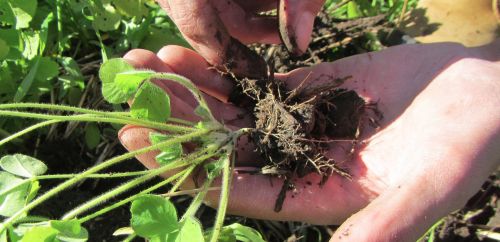Garvey-Glenn Watershed Soil

When it comes to improving water quality, our solutions become more effective the closer we get to the source of the problem. Much of the ‘non-point source’ phosphorus and nutrients in Lake Huron are the result of soil erosion, and soil erosion is largely the result of poor field management and soil exhaustion.
The Maitland Valley Conservation Authority is working with farmers in the Garvey-Glenn watershed to measure the health of their soils and improve field management. Funding from the Ontario Ministry of Agriculture, Food and Rural Affairs (OMAFRA) has kick-started the Soil Health Project in this 4000-acre watershed just north of Goderich.
Farmers have updated their soil tests and met with soil health experts to create a strategy to improve soils and balance their nutrient levels, making sure they don’t over-apply nutrients. The project has also supported aggregate stability sampling across the watershed and funded farmers to demonstrate cropping practices that reduce soil erosion.
Garvey Creek water quality data clearly show that the majority of sediment and phosphorus enters Lake Huron in the non-growing season (November to April), especially during the spring melt. It is common for farmers to plow after the fall harvest so that the field is ready for spring planting, but this means the soil is left bare and vulnerable. Rain and snow melt form runoff pathways in bare fields and both soil and nutrients are carried straight to the lake.
The best way to control soil erosion in fields is to cover the soil with crops and/or residue. Farmers who plant a crop after harvest (like rye, oats, or clover) are helping to hold soil in place over the winter with living roots. Other farmers choose not to plow, or till only in strips, leaving stalks and crop stubble on the surface of the field to protect soil.
Field management strategies such as cover crops and strip tillage, along with regular soil testing and nutrient balancing, will improve soil quality and water quality. The Soil Health Project is working with farmers towards the watershed-wide adoption of these best management practices.
